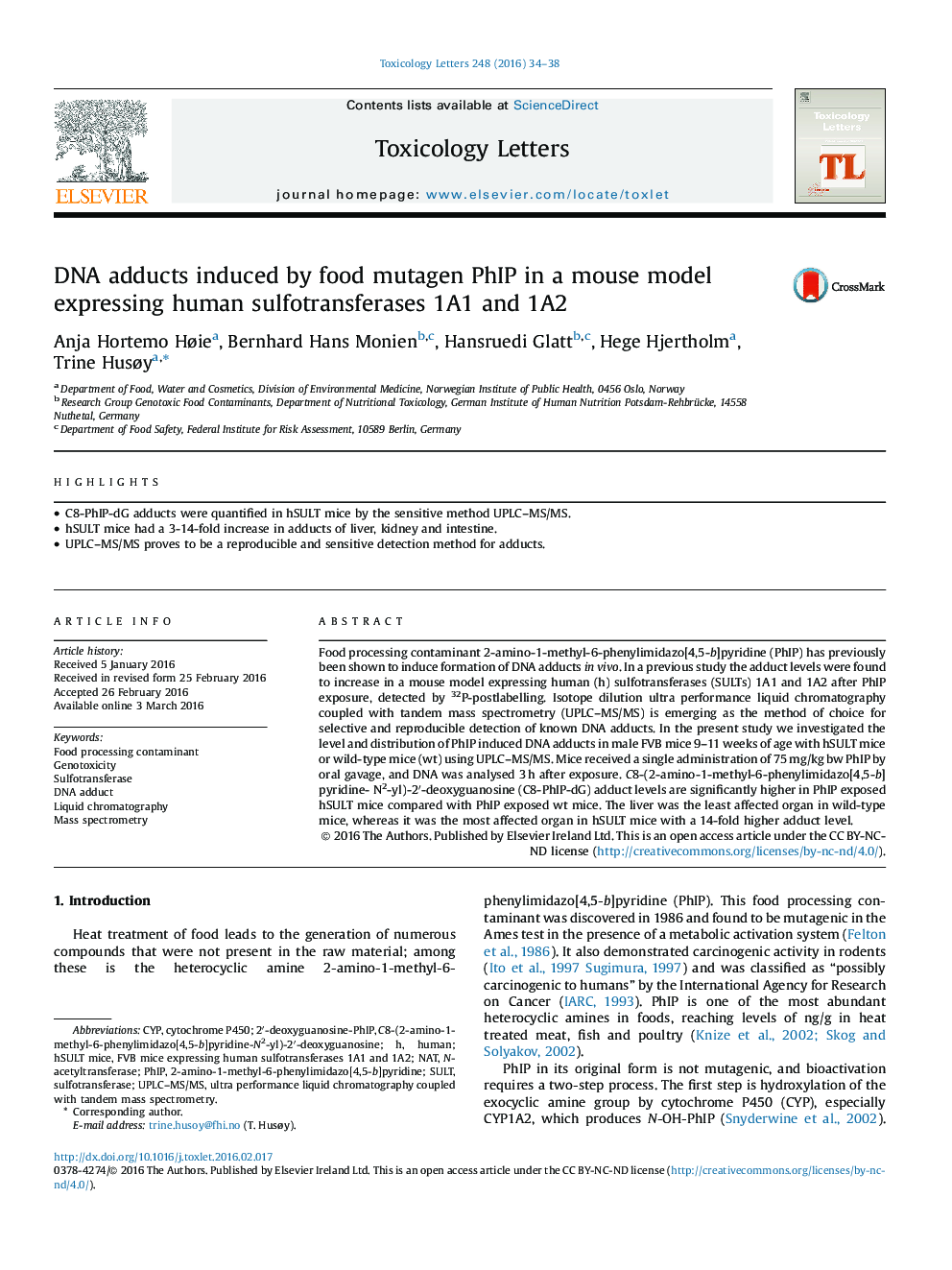| کد مقاله | کد نشریه | سال انتشار | مقاله انگلیسی | نسخه تمام متن |
|---|---|---|---|---|
| 5859809 | 1562624 | 2016 | 5 صفحه PDF | دانلود رایگان |

- C8-PhIP-dG adducts were quantified in hSULT mice by the sensitive method UPLC-MS/MS.
- hSULT mice had a 3-14-fold increase in adducts of liver, kidney and intestine.
- UPLC-MS/MS proves to be a reproducible and sensitive detection method for adducts.
Food processing contaminant 2-amino-1-methyl-6-phenylimidazo[4,5-b]pyridine (PhIP) has previously been shown to induce formation of DNA adducts in vivo. In a previous study the adduct levels were found to increase in a mouse model expressing human (h) sulfotransferases (SULTs) 1A1 and 1A2 after PhIP exposure, detected by 32P-postlabelling. Isotope dilution ultra performance liquid chromatography coupled with tandem mass spectrometry (UPLC-MS/MS) is emerging as the method of choice for selective and reproducible detection of known DNA adducts. In the present study we investigated the level and distribution of PhIP induced DNA adducts in male FVB mice 9-11 weeks of age with hSULT mice or wild-type mice (wt) using UPLC-MS/MS. Mice received a single administration of 75Â mg/kg bw PhIP by oral gavage, and DNA was analysed 3Â h after exposure. C8-(2-amino-1-methyl-6-phenylimidazo[4,5-b]pyridine- N2-yl)-2â²-deoxyguanosine (C8-PhIP-dG) adduct levels are significantly higher in PhIP exposed hSULT mice compared with PhIP exposed wt mice. The liver was the least affected organ in wild-type mice, whereas it was the most affected organ in hSULT mice with a 14-fold higher adduct level.
Journal: Toxicology Letters - Volume 248, 25 April 2016, Pages 34-38